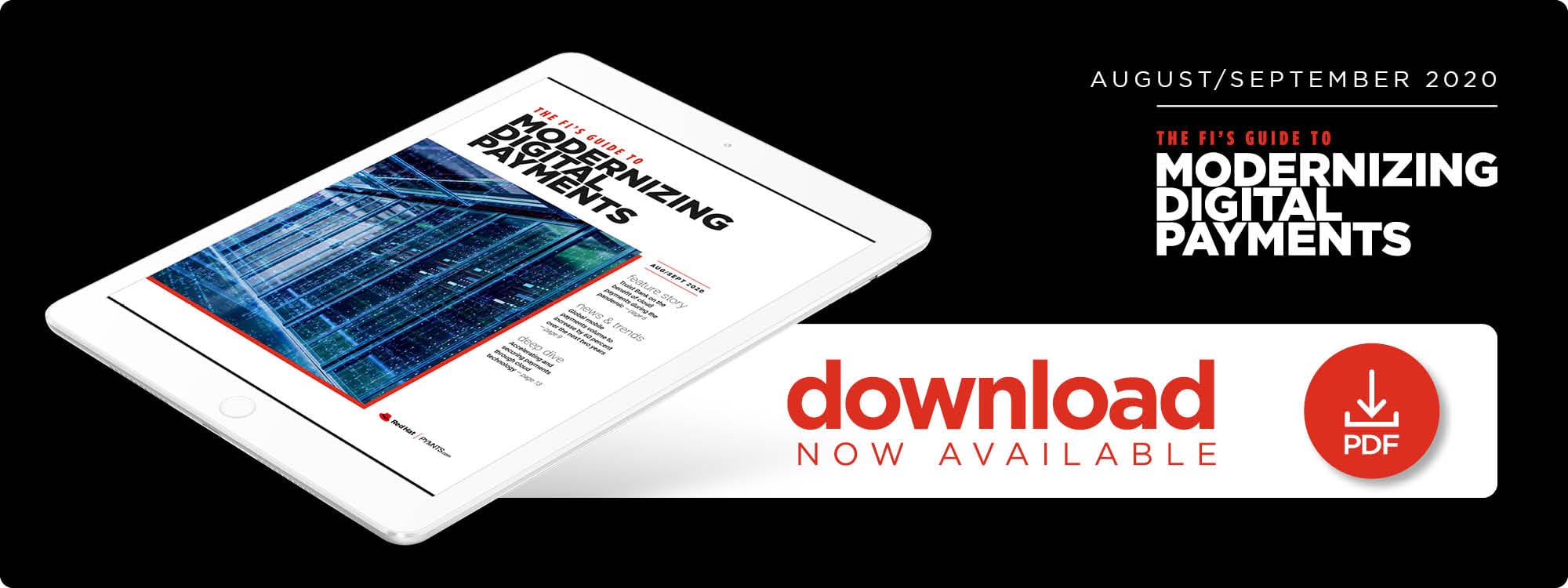Deep Dive: Harnessing Cloud Technology To Accelerate And Secure Real-Time Payments

The payments economy is continuously growing and becoming more digital. The global mobile payments market was valued at more than $3.7 trillion in 2019 and is expected to grow to $12.4 trillion by 2025 — an increase of more than 235 percent. Several factors have driven this expansion, including the increasing shift from cash and checks to digital payments as well as the rise of online payment systems like PayPal, digital wallets like Apple Pay and peer-to-peer (P2P) payment apps like Venmo.
Banks and other businesses are well aware of the advantages of real-time payments, too — a survey of more than 500 company executives indicated that 71.9 percent are very or extremely interested in these payments’ capabilities — but they are also well-versed in the challenges that come with executing them. Payments are fraught with potholes, including sluggish transaction times and the ever-present risk of fraud. Not only do these issues lead to frustration on the part of treasury staff, but they also discourage customers, potentially losing business due to rocky payments processes.
Many banks and businesses are turning to cloud-based payment solutions to overcome these obstacles. The following Deep Dive examines the roadblocks that stymie real-time payments, and how businesses can attempt to overcome these obstacles through the use of cloud payments.
Challenges Facing Instant Payments
Payments can be notoriously slow, especially when sending across borders. This is due to a system called correspondence banking, which requires a direct link between one bank in the sending country and another bank in the receiving country. These links are usually created on a bilateral basis, meaning that money has to be transferred in a daisy chain from one bank to the next until it crosses the international border and reaches its final destination. A typical payment flows through no fewer than four different banks before the payment is complete, with each bank conducting its own regulatory and compliance checks and taking a cut of the payment for its trouble.
These checks are necessary to counter the other major threat facing payments, which is a lack of security. Not only are fraudsters looking to intercept or redirect the payments, but they also seek to harvest the private data of the sender or receiver by using the payment as an entry point, a problem that is prevalent in both international and local payments. A recent survey from ACI Worldwide and YouGov found that 62 percent of consumers were concerned about the security of their payment experiences at gas stations and convenience stores, for example. Digital-native payment systems that transact between smartphones also encounter security issues, as exemplified by a complaint last year that Apple’s iOS system was unwittingly saving strangers’ complete card details, potentially exposing that data to bad actors.
Many banks and payment providers are therefore turning to cloud-based payment options to mitigate these flaws. Some governments, including the U.S., are also looking into leveraging these payments systems.
How Cloud Technology Can Improve Payments
Cloud-based payments come with a number of advantages over their traditional counterparts. The first is improved speed, as exemplified by the adoption of cloud technology by the global payments network SWIFT. This network is quickly becoming more popular as a replacement for correspondence banking models, partnering with BNY Mellon and Microsoft to enable payments at 11,000 financial institutions (FIs) in more than 200 countries around the world. This partnership will remove the need for FIs on the SWIFT network to have their own on-site payments technologies, which SWIFT’s Chief Information Officer Craig Young explained would improve the speed and consistency of transactions conducted on the network.
“Cloud computing is a key enabler of a faster, frictionless future and a powerful catalyst for innovative new services,” Young said.
Off-premise cloud infrastructure is often much more secure than its on-site counterparts. Studies have shown that on-premise systems are much more likely to be hacked than off-premise systems. One study from Gartner found that off-premise cloud infrastructure experienced 60 percent fewer incidents than traditional data centers. These infrastructure providers have built-in security controls, including sophisticated monitoring and surveillance.
For these reasons and more, banks are increasingly outsourcing their payments infrastructures to third-party cloud providers, including the four largest banks in the U.S. This shift to the cloud extends beyond just payments: Bank of America, for example, plans to shift 80 percent of its technology workloads to the cloud over the next few years. Cloud-based payments are also quickly becoming the norm in a variety of other industries, with 54 percent of organizations reporting that they are likely to shift their payments platforms to the cloud in the coming years.
Despite these benefits, there is still a sizable minority of banks and businesses that do not currently harness cloud payments or have any plans to do so. These organizations would do well to change their tune, or they will be left at a disadvantage.

